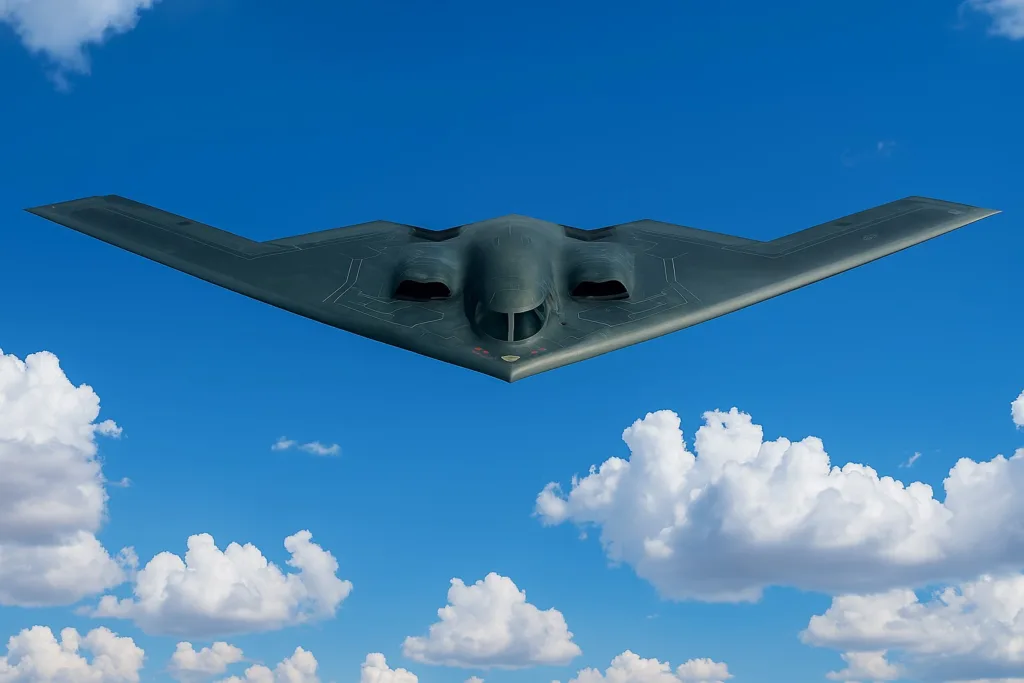The B-2 Spirit or the so-called stealth bomber is one of the most sophisticated and mysterious warplanes ever created by Northrop Grumman. It has been created to fly deep behind tough enemy air defence to become a critical asset of the strategic bomber in the United States. The B-2, with its unique flying wing design, is the only long range, strategic combat aircraft, which has a two-person crew, and first flew in 1989 and entered service in 1993. Its overall length of 21 meters and a wingspan of 52.4 meters are coupled with four engines (produced by General Electric) F118-GE-100 that add to its stealth as they do not use afterburners.
Specially designed to operate long-range missions, the B-2 has a maximum range of approximately 11,000 kilometers and a combat range of 9,600 kilometers. It is also known to cruise at 900 km/h and has a maximum speed of 1010 km/h and a climb ability of 3000 ft/min to service ceiling of 15, 240 meters. Its patrol ability is estimated at up to 40 hours and the aircraft can be used across the world in long lasting missions. Its empty and maximum takeoff weights are 71,700 and 170,500 kilograms respectively.
When holding Jasmin missiles, the B-2 internally has two weapon bays with an official capacity of 18,000 kilograms (or an estimated 23,000 kilograms) of variously sized munitions. These are the regular and the nuclear bombs, including Mk-82, GBU-38, Mk-84, GBU-31, and B61, and B83, as well as the sophisticated standoff weapons, including the JSOW AGM-154, JASSM AGM-158, and the colossal GBU-57 and bunker busters. Although even the majority of technology installed in B-2 remains confidential, seen capabilities reflect an ideal combination of stealth, heavy armament, and engineering skills of engineering works hence the reason why B-2 is an icon of a modern air combat unit.
1. Avionics Bay: The Brain of the Bomber
The avionics bay is where the sophisticated systems (which include the control of navigation, targeting, communications, and electronic warfare) are found and is located in the forward fuselage. The B-2 is based on the package of latest state-of-the-art systems:
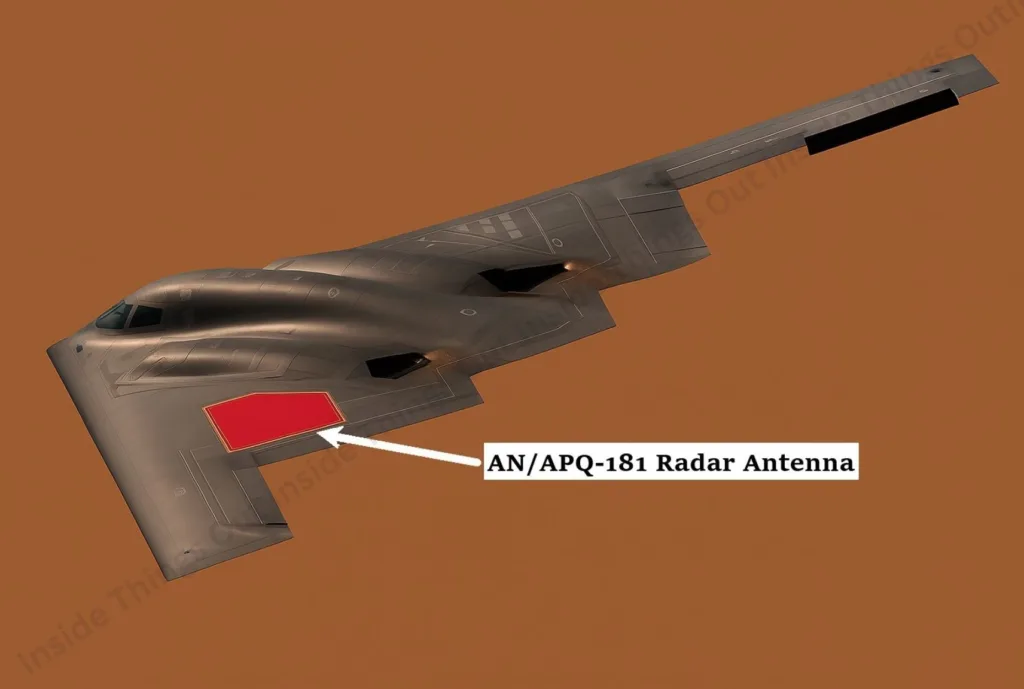
- Radar Systems: B-2 employs the AN/APQ-181 that is low-probability-of-intercept radar and targeted to do the stealth operations. It offers terrain and ground mapping feature.
- Navigation Systems: The flight-level precision tracking and positioning system is dual GPS and Inertial Navigation System (INS) that even has high accuracy in the GPS-denied environment.
- Communication Systems: With UHF, VHF, SATCom, and encrypted data links, the B-2 has a secure reliable communication even when flying to any part of the globe.
- Electronic Warfare Suite: Defensive systems identify, counterfeit or avoid missile and radar threats. This is done by embedding those systems to provide a low radar cross-section (RCS).
2. Fly-by-Wire Flight Control Systems
Aerodynamic challenge comes with the flying wing structure of the B-2. It has a digital fly-by-wire control system to help in its stability. This computer-driven arrangement reads pilot command and keeps on regulating control surfaces so that a flight is smooth and steady.
- Lack of Mechanical Linkages: Control inputs applied by the pilot are relayed electronically thereby enhancing a faster and accurate response.
- Flight Control Computers: These computers characterize the activities of elevons, rudders, and trim flaps, which are fundamental in the management of pitch, roll as well as the yaw.
- Redundant Systems: Triple-redundant architecture will allow any system failure to automatically be compensated which will raise the system survivability.
3. Internal Weapons Bays: Precision Payload Delivery
The B-2 is one of the most widely recognized aircraft characteristics in view of the internal weapons bay, which contributes significantly to the stealth characteristic of the aircraft. The B-2 stores its armament internally reducing radar reflection, and drag.
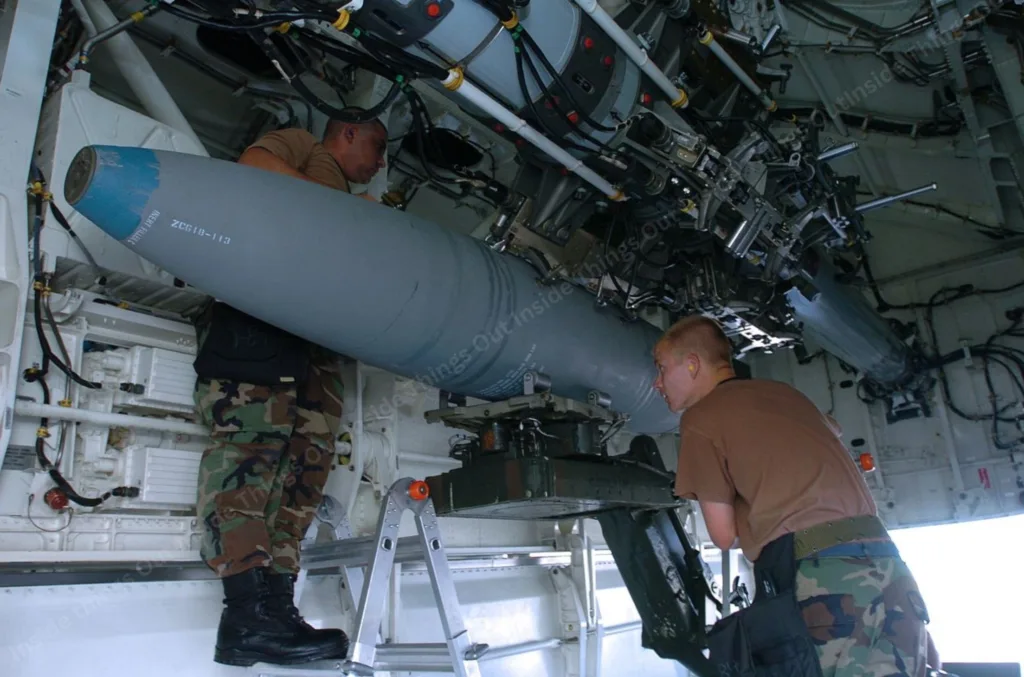
- Two Main Bomb Bays: Centrally located along the fuselage, these bays can be configured for different payloads.
- Armament Capability:
- Conventional bombs: JDAMs, Mk-82, Mk-84
- Nuclear weapons: B61 and B83
- Cruise missiles and smart bombs
- Rotary and Smart Racks: Depending on mission requirements, the bomb bays use rotary launchers or smart racks to efficiently deploy munitions.

The weapons system is managed via integrated fire control computers, allowing precise targeting and release even under adverse conditions.
4. Power plant and Exhaust System
The B-2 Spirit is built with four General electric F118-GE-100 turbofan engines, which produce high thrust without afterburner to minimise the heat and noise.
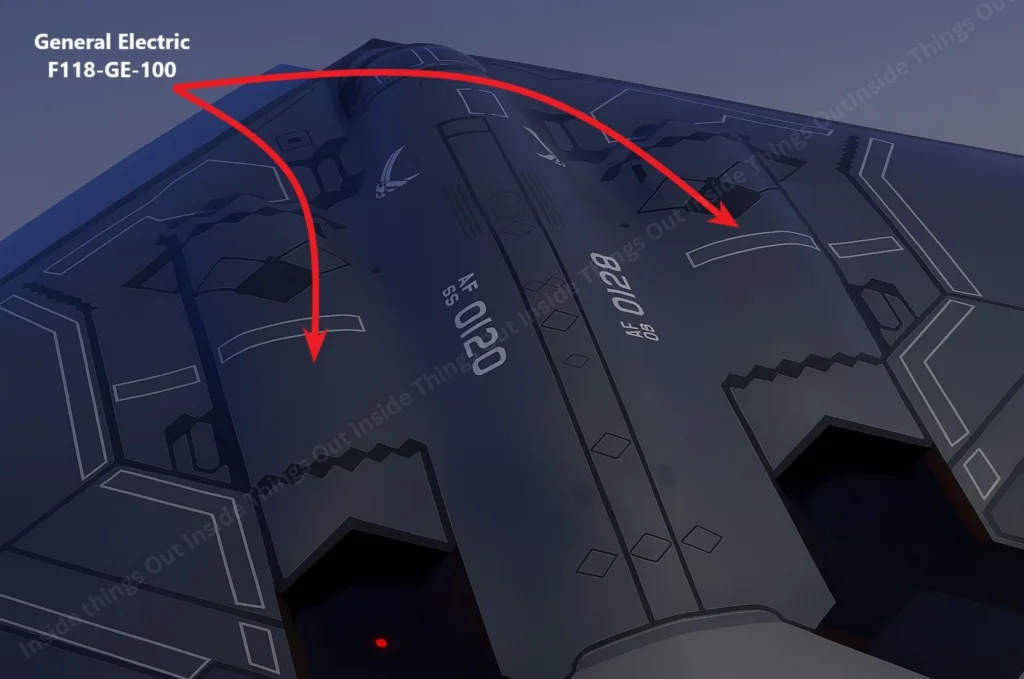
- Engine Integration: The engines have been mounted deeply on the wing structures so as to hide them out of the radar and infrared scanning.
- S-shaped Inlets: Shaped to disperse radar signals and disguise the engine rotating compressor blades, a frequent radar reflector.
- Infrared Suppression: The exhaust of the engine is cooled and ejected along the top of the wing limiting infrared emanations apparent to heat-seeking missiles.
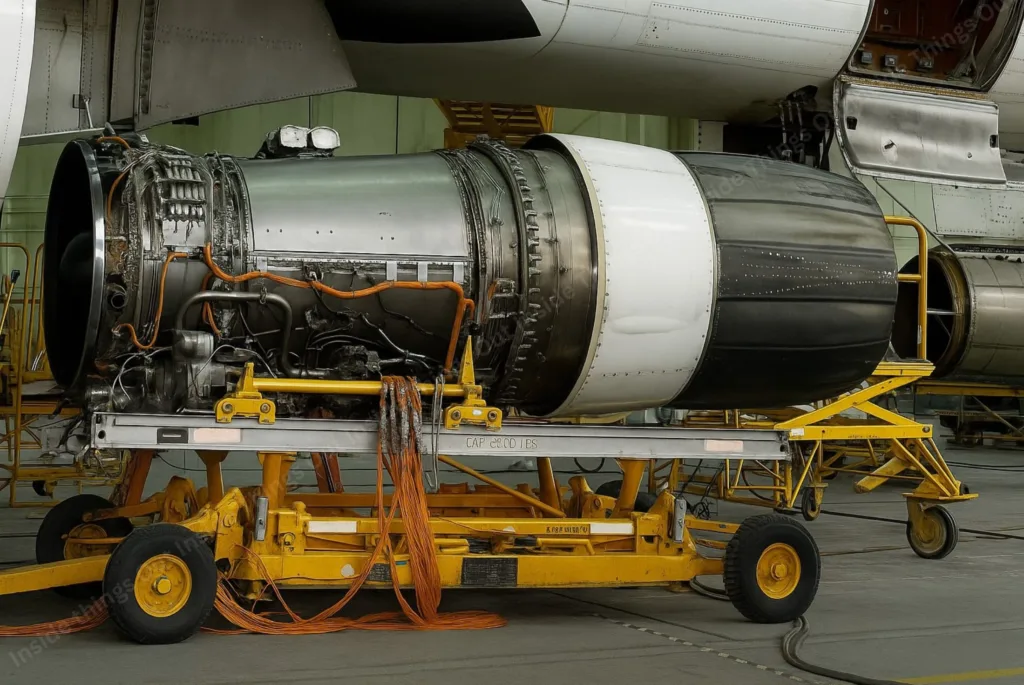
This unusual position of engine and management of exhaust help in the stealth left in the B-2.
5. Structural Components and Materials
B-2 has an airframe made mainly of the sophisticated composites (lightweight and radar-absorbent). These are carbon-fiber reinforced plastics and other RAM (Radar absorbent Materials).
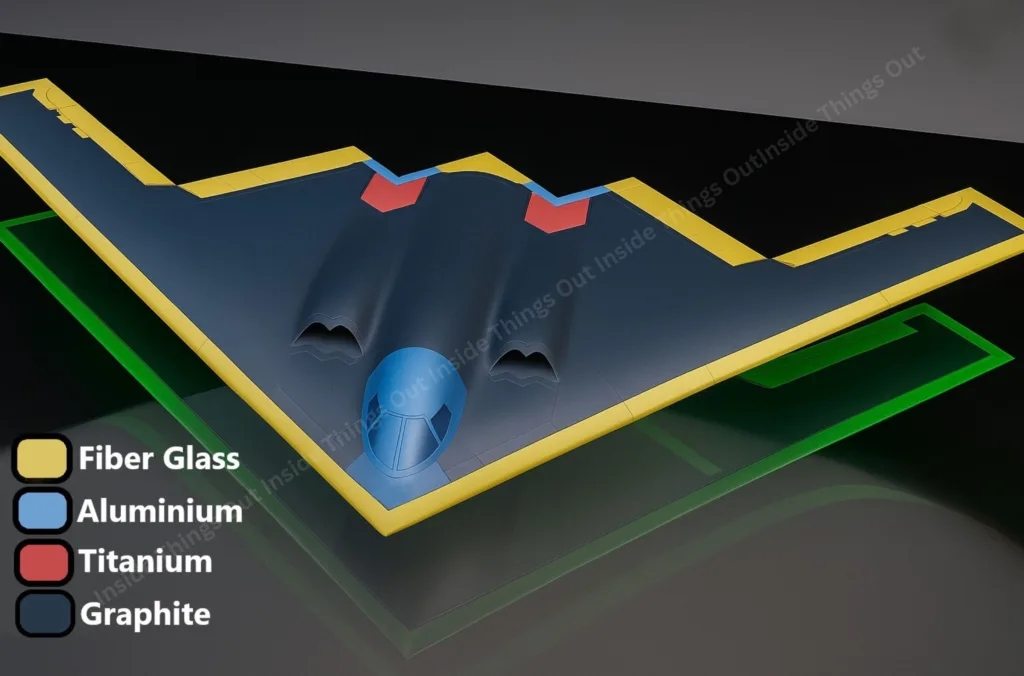
- Flying Wing Design: Does away with the vertical stabilizers and the fuselage components that normally raise radar signature.
- Seamless Panels: Special which is made with the aim of minimizing the panels gaps that may cause reflections of radar waves.
- Maintenance Access: interior areas are available through access panels that are flush mounted, do not in any way interfere with the aerodynamic or stealth shape.
The structural design shares a mix of aerodynamic performance, stealth shape and space utilization inside.
6. Stealth and Defensive Systems
Stealth isn’t just about shape—it’s also about what’s inside. The B-2 integrates multiple systems to reduce its detectability across all spectrums.
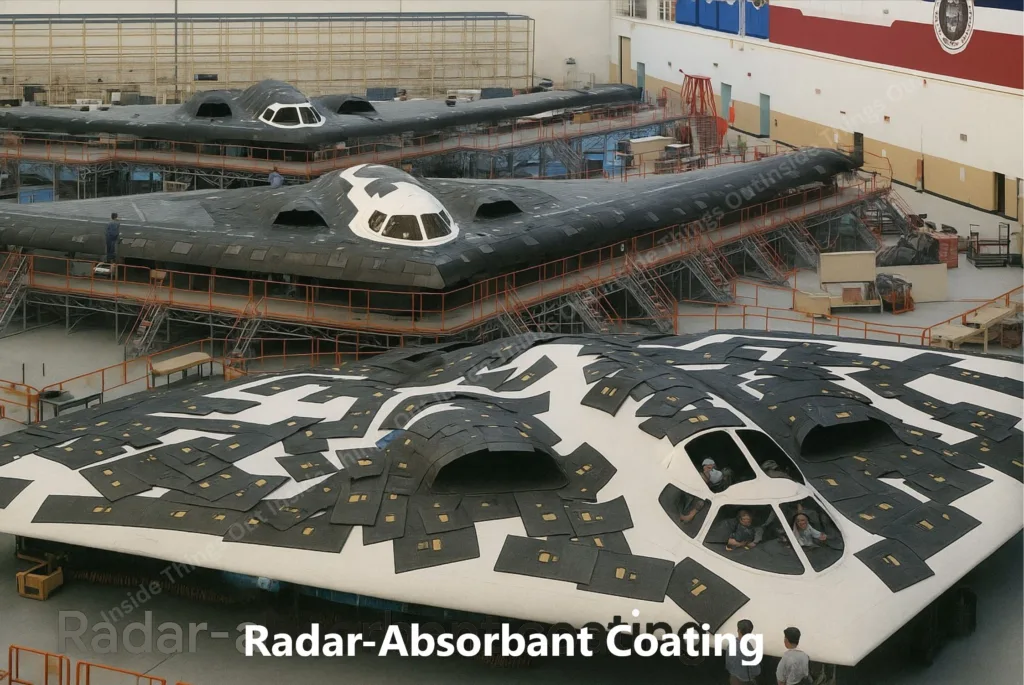
- Radar Absorbent Coatings: Multi-layer coatings on the surface absorb electromagnetic waves.
- Electronic Countermeasures (ECM): Detect and respond to radar threats with jamming or signal spoofing.
- Radar Warning Receivers (RWR): Alert pilots of tracking or targeting attempts, enabling evasive maneuvers.
- Low Emission Design: Heat, radio, and even acoustic emissions are minimized, making the B-2 hard to detect even with multi-sensor arrays.
7. Cockpit and Crew Systems
The B-2 is piloted by two crew individuals i.e. the Pilot and the Mission Commander. It is fitted with long term worldwide missions which include:
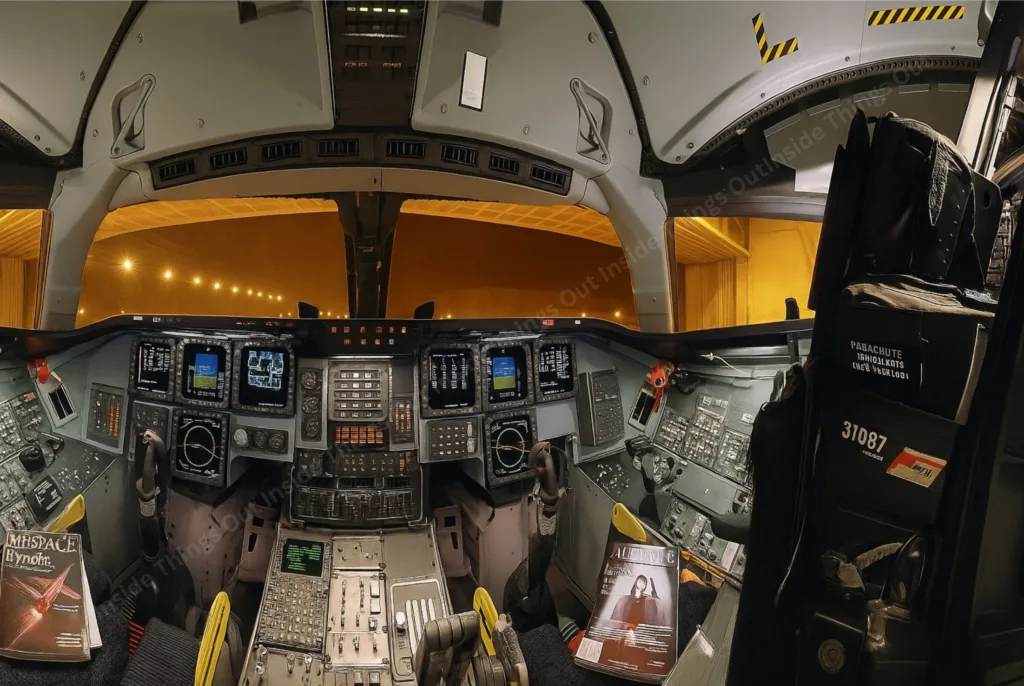
- Multi-Function Displays (MFDs): There is a real-time provision of navigation data, targeting, flight status, and system wellbeing.
- HUD (Heads -Up Display): Puts flight-relevant flight information in the pilot field of vision.
- Environmental Systems: Facilitate high altitude and long lingering tasks, comprising of climate control, restorative oxygen, and rest.
- Secure Communication Equipment: Can be used to coordinate strategically, either nuclear command-and-control mood when needed.
8. Electrical and Hydraulic Systems
There has to be strong and duplicate power and movement management in the inner workings of the airplane:
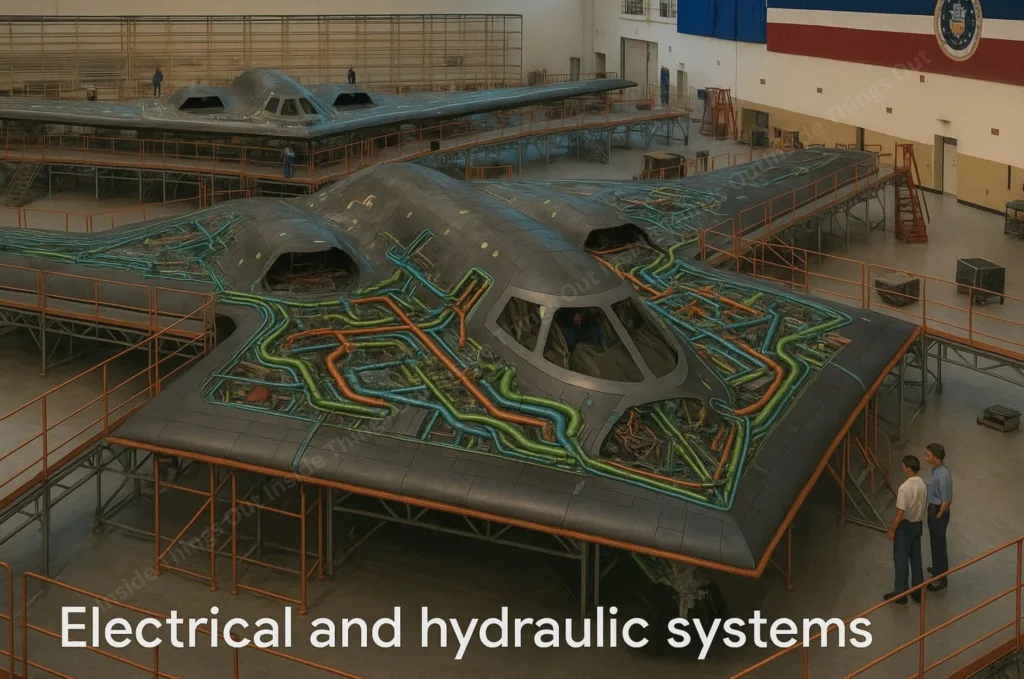
- Electrical Generation: The generators are powered by each of the engines, avionics, flight controls and on-board systems.
- Backup Power: It contains batteries and may include auxiliary power units in case of emergency.
- Hydraulic Systems: Landing gear, control surfaces, and weapons bay doors powered by multiple redundant hydraulic loops.
Reliability of the system is very important when operation is prolonged and especially in combat areas.
9. Communication and Data Links
Long distance bombing operations necessitate long distance and high strength communication:
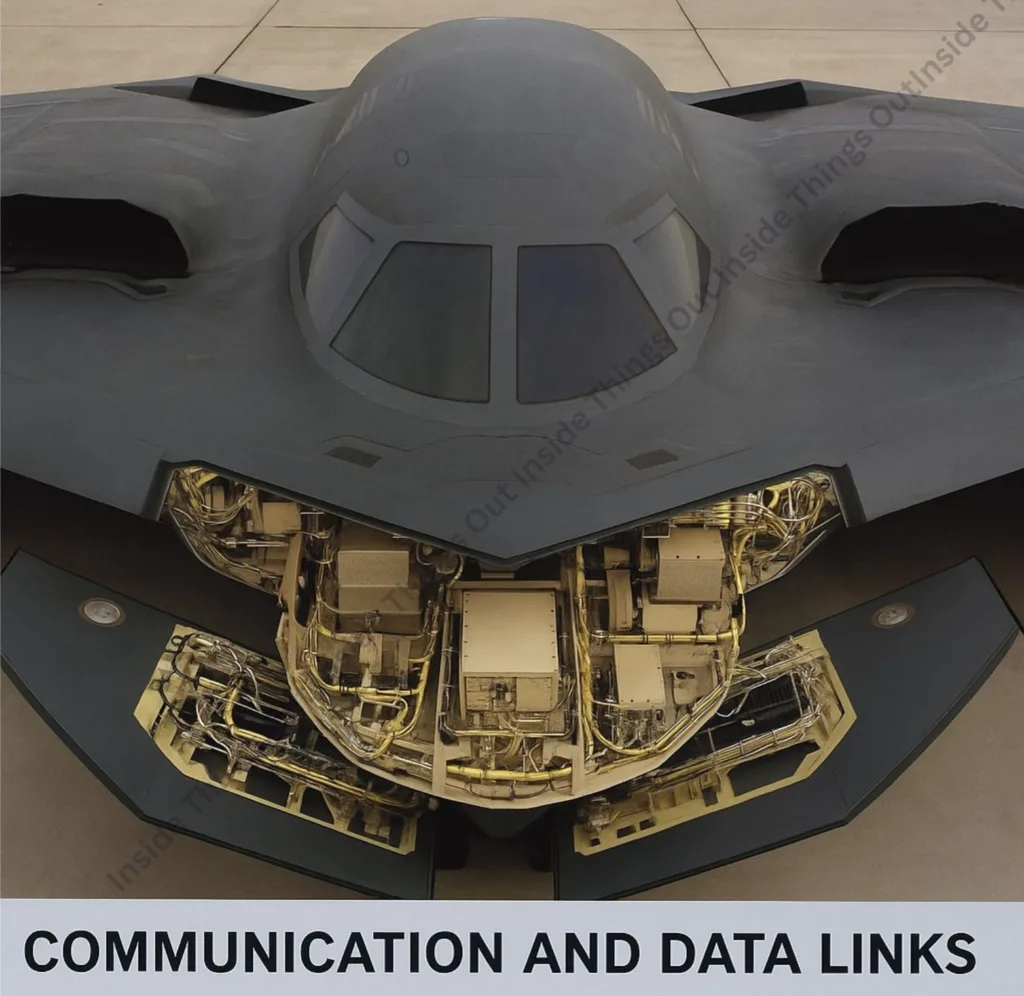
- SATCOM and HF Radios: They provide worldwide coverage.
- Data Links: Transports current mission information, such as target and flight plan updates in encrypted form.
- Low-Probability-of-Intercept Protocols: Protocols that are meant to evade detections when transmitted so that the stealth of the aircraft is not compromised.
These communication systems guarantee that the B-2 can work either as an independent effort or as an extension to a comprehensive network- centric warfare policy.
10. Navigation and Targeting Systems
The strategic role of the B-2 requires accurate navigation as well as targeting.

- Dual-Mode Navigation: MB-05 has advanced GPS integrated with Inertial Navigation that allows the device to continue working even in the GPS-jammed areas of performance.
- Terrain-Following Radar: Enables flying at low altitude under radar protection.
- Automatic Target Recognition (ATR): has the capacity to detect and prioritize the targets by means of the satellite or onboard sensors.
- Laser Guidance and Smart Bomb Interfaces: Increase the accuracy of the strike, even against a moving target, or one behind fortifications.
Final Thoughts
The B-2 Spirit is not just a Bomber it is a symbol of technological and strategic superiority. All its internal elements including its radar and its fuel-efficient engines are stealth, precision-oriented, and survivable. It should be noted that even though the B-2 was first flown back in the 1980s, it has remained at the top of the modern war by being upgraded constantly.
One of the rarest and most elite aircraft to have ever seen the light of day with 21 ever produced and even fewer out in service today is the B-2 which is a statement of what can be done when you combine both aerospace innovation and strategic necessity.

